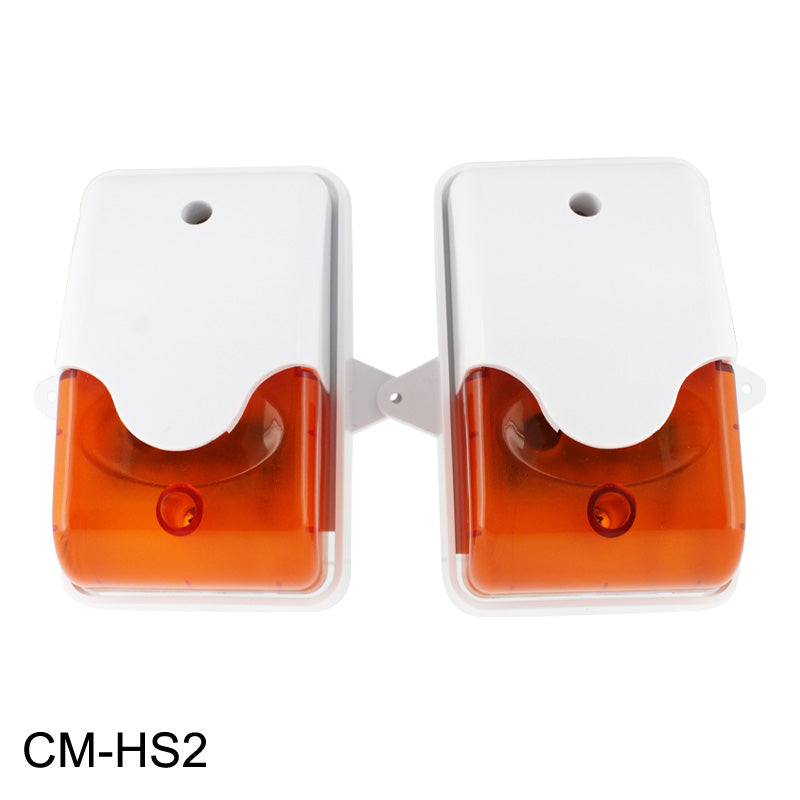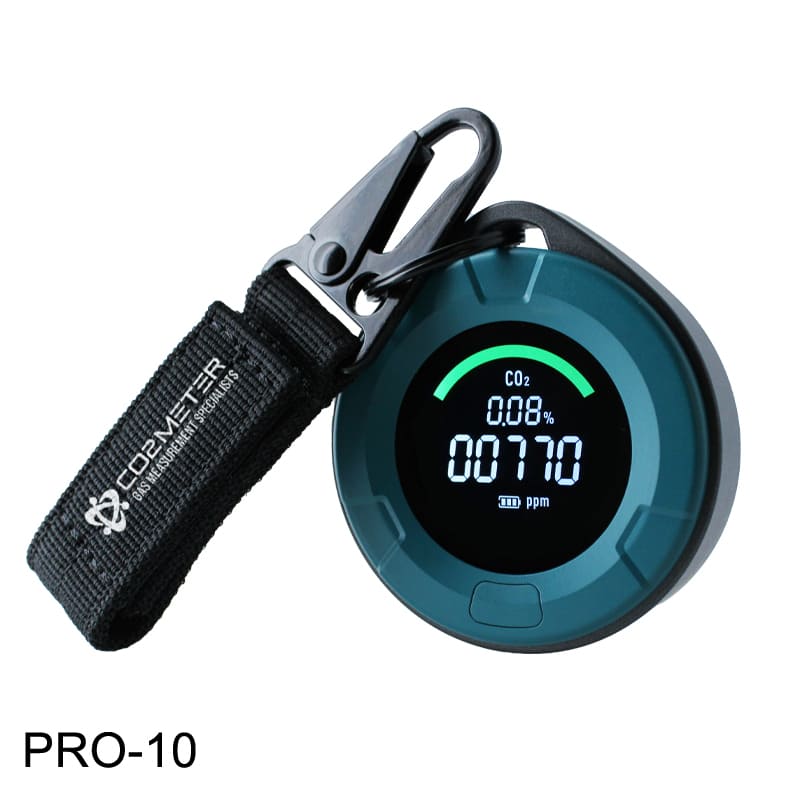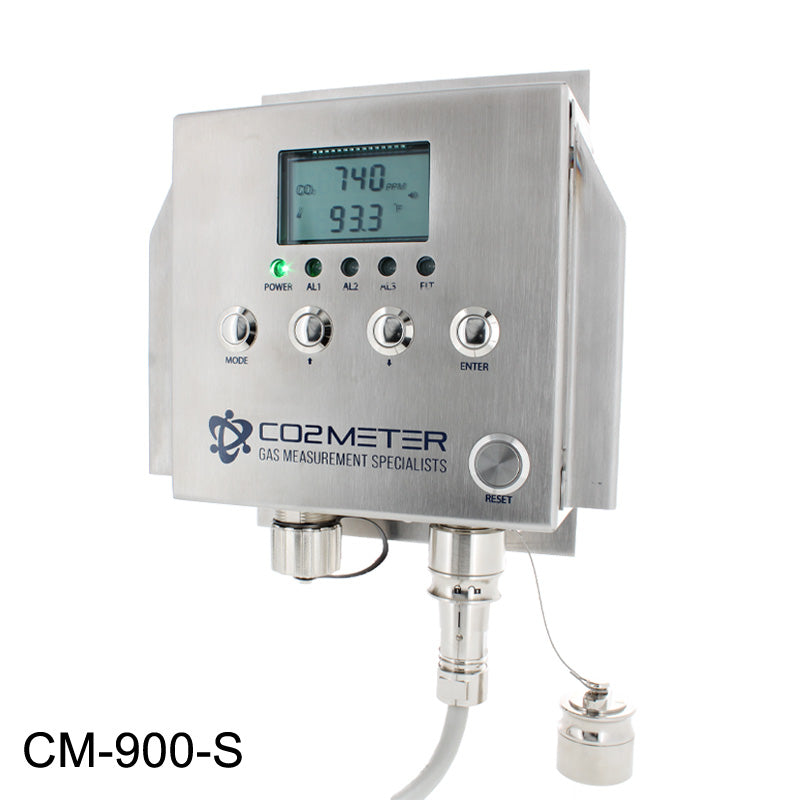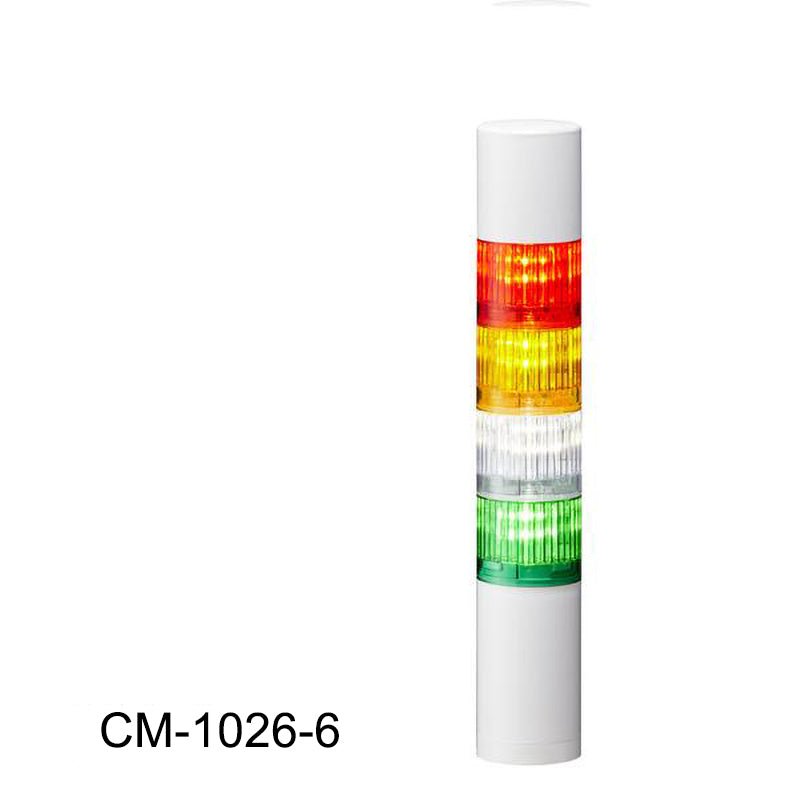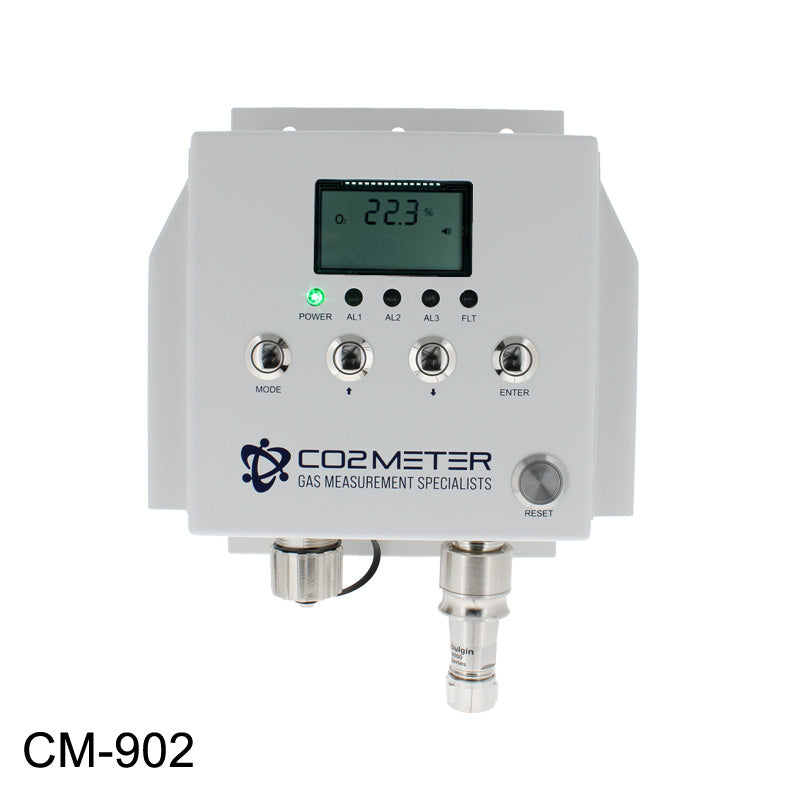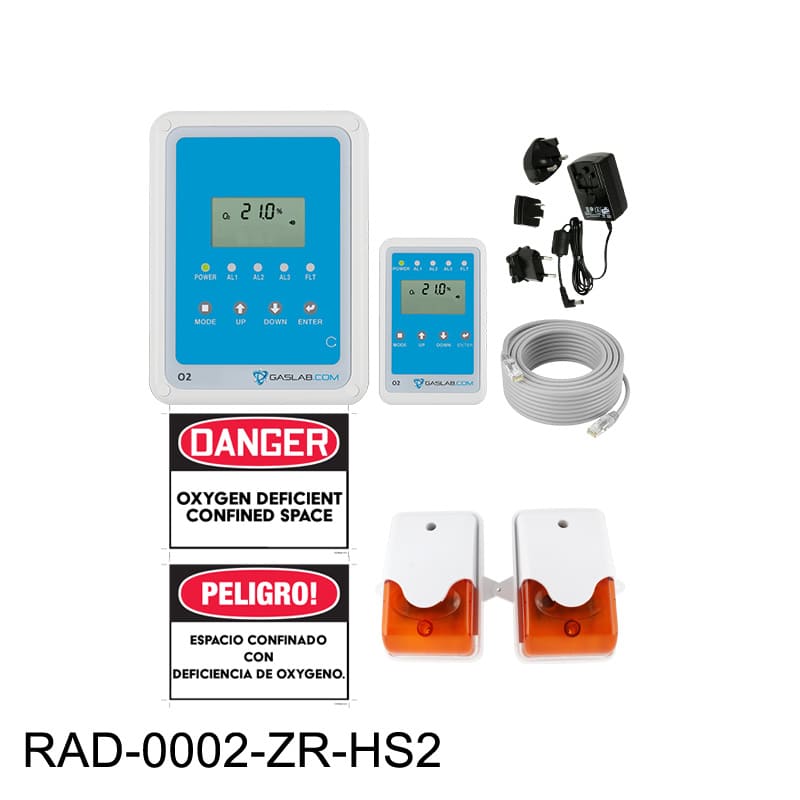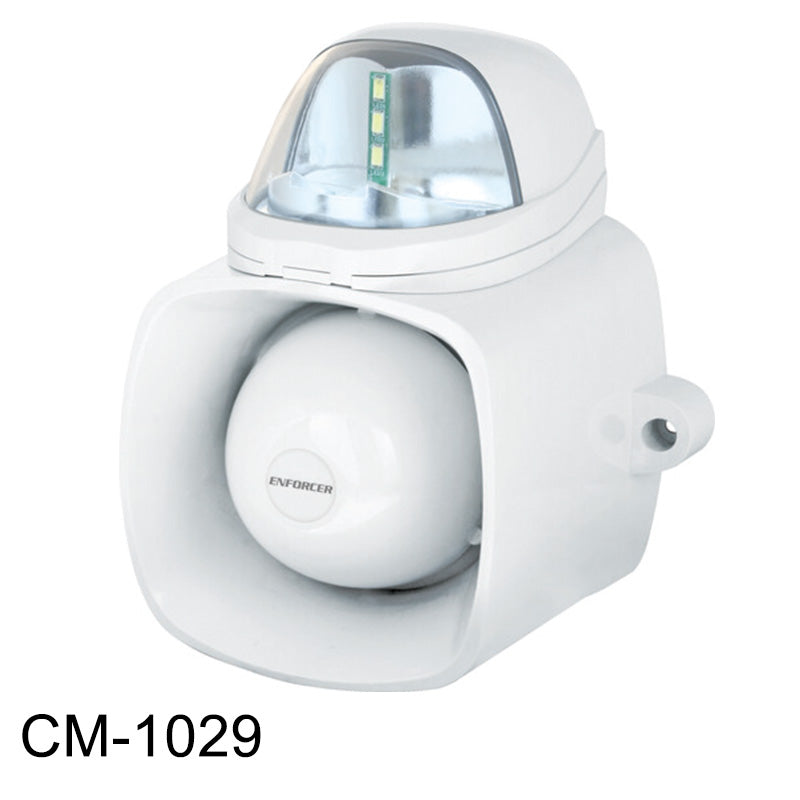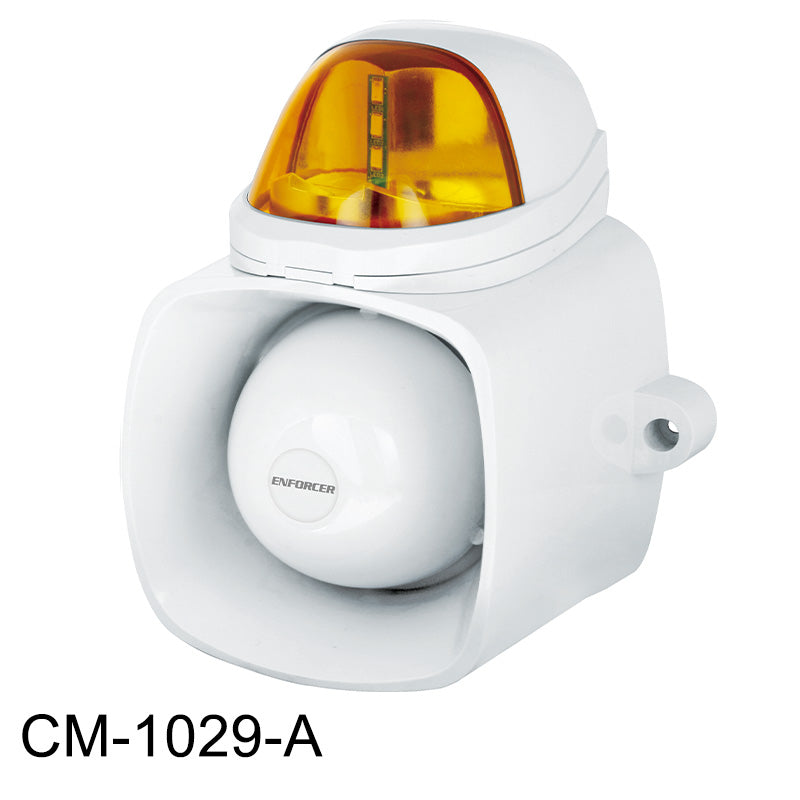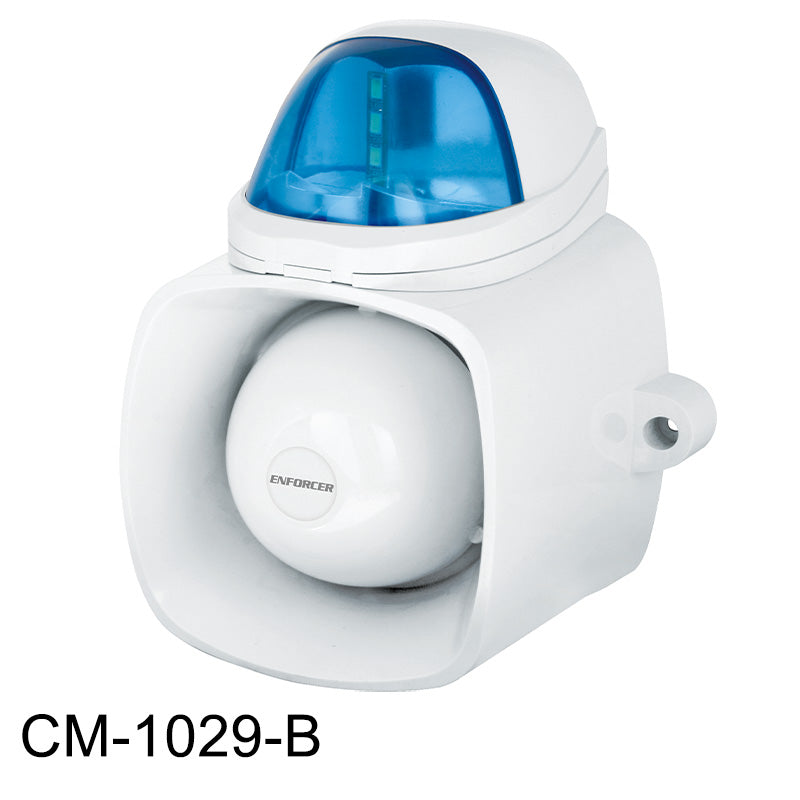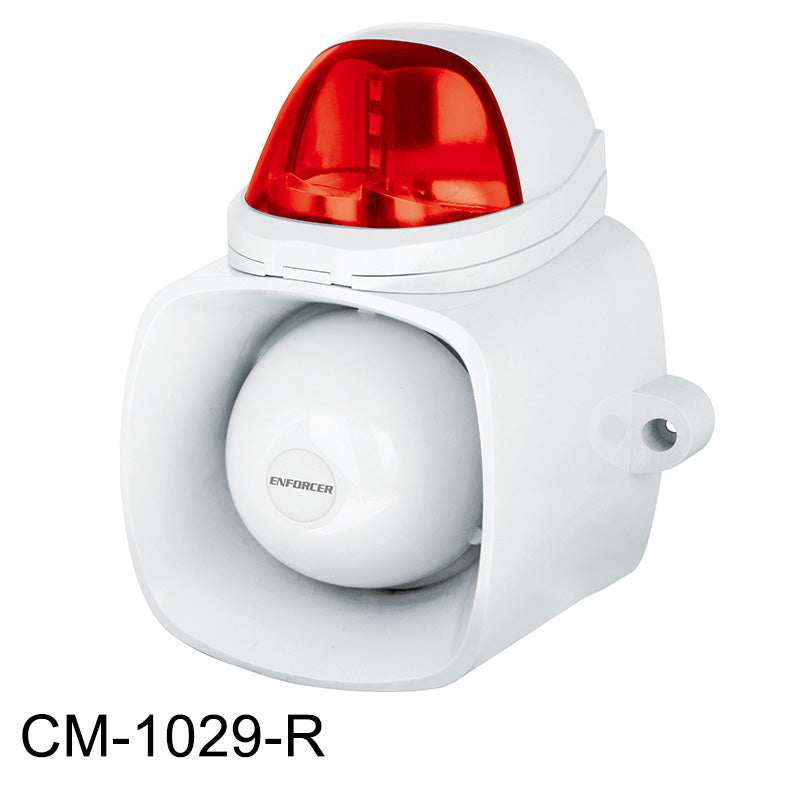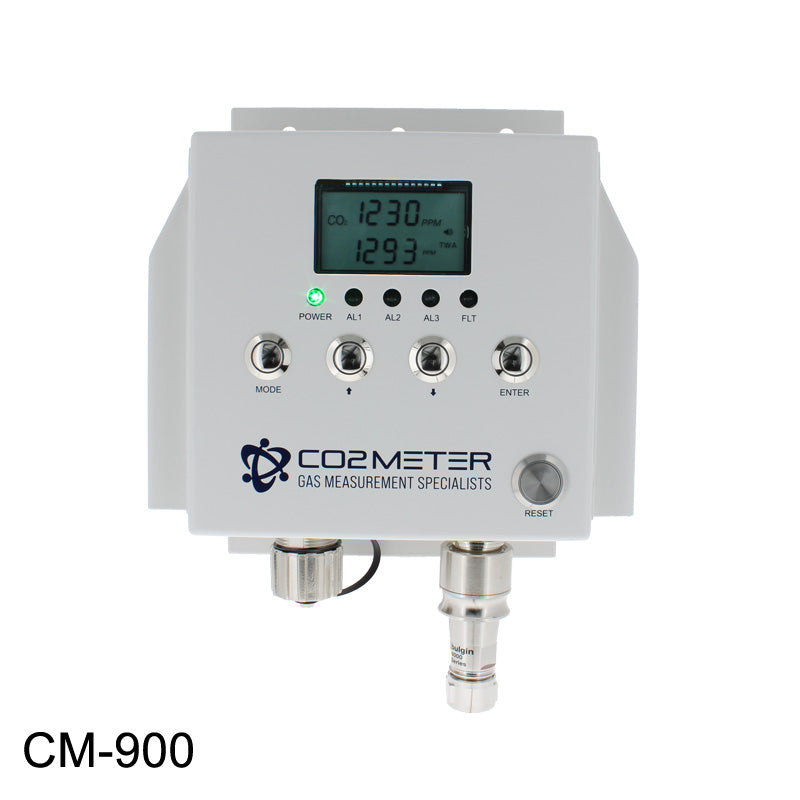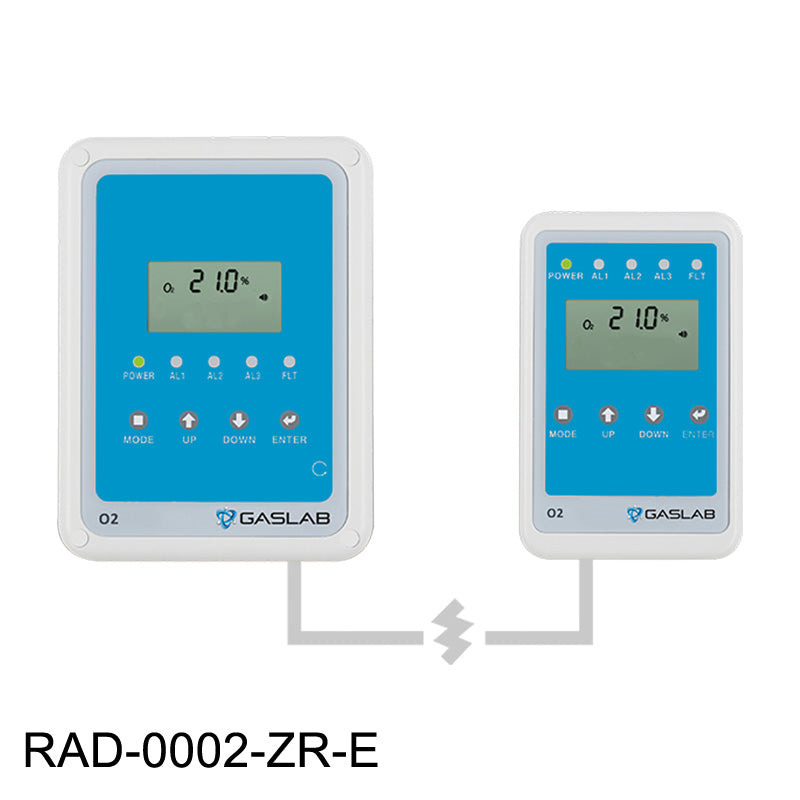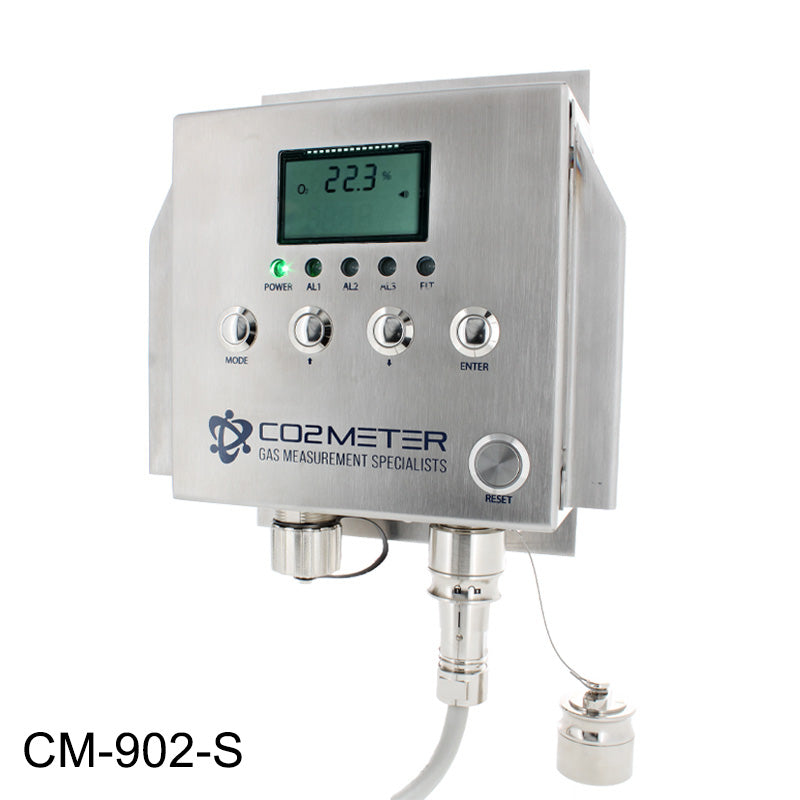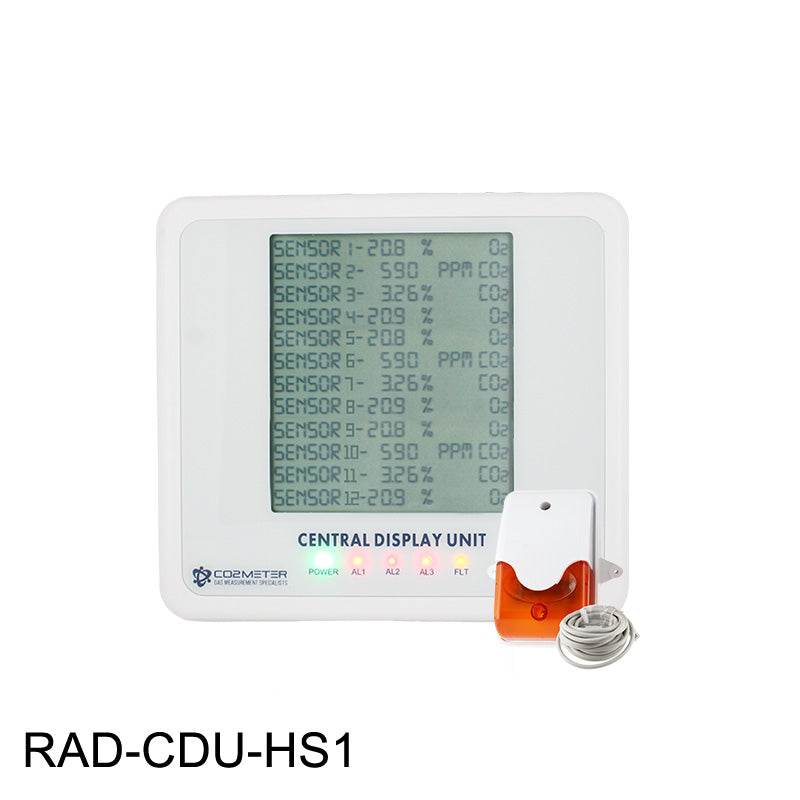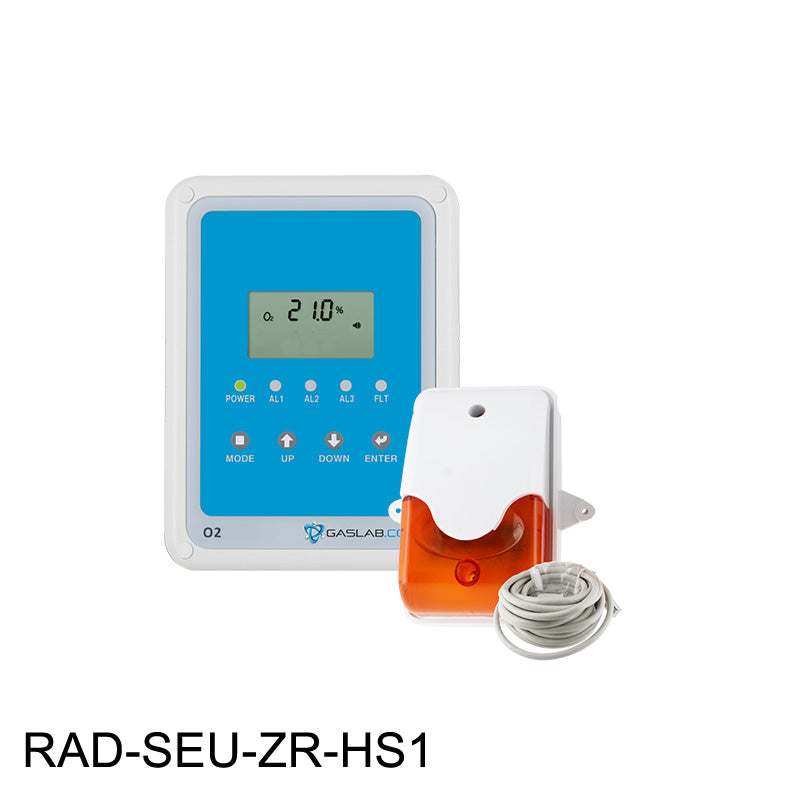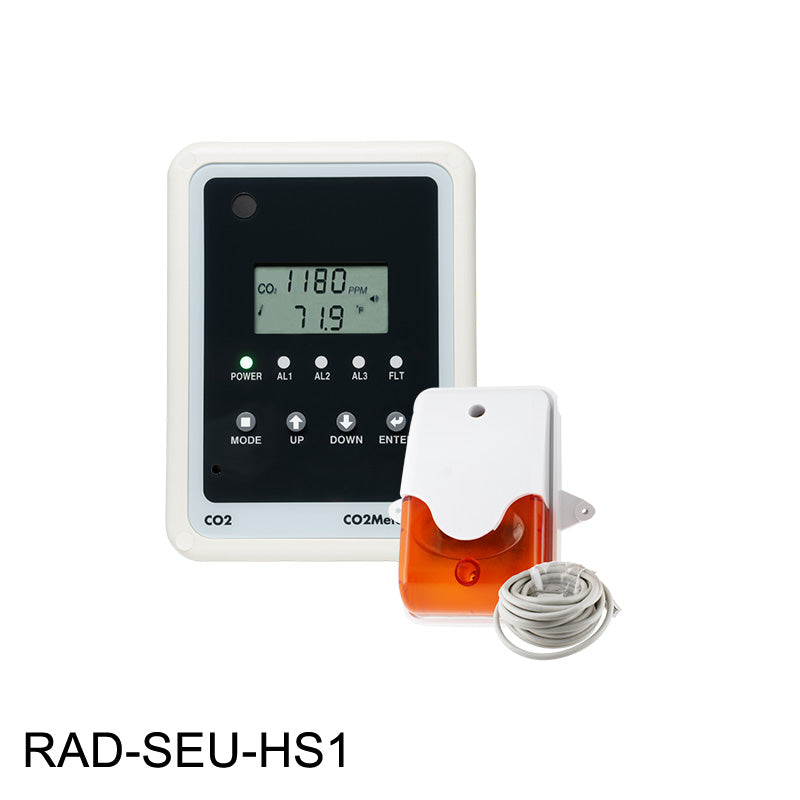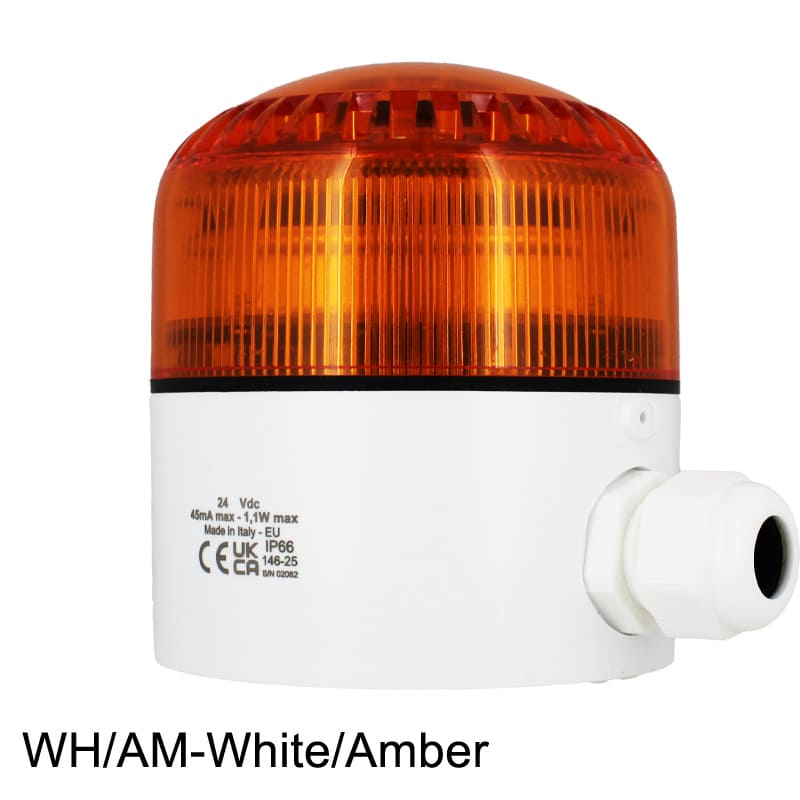Dry Ice Safety
Dry Ice is Carbon Dioxide (CO2) in its solid form.
Dry Ice is used to maintain products at extremely cold temperatures. It is used to flash-freeze biological samples, preserving vaccinations or perishable items, creating special effects in entertainment and arenas, and ensuring the preservation and flavor of food during shipping and storage.
Dry Ice begins to sublimate (melt) at -78F. When it sublimates, the solid turns back into gaseous CO2 which can be a hazard in enclosed spaces. Proper monitoring of spaces where Dry Ice is stored and used is essential to employee safety and facility compliance.
Dry Ice Safety
CO2 monitors and detectors are the only safe solution for Dry Ice storage and use. Monitoring for oxygen depletion is not sufficient, and is discouraged by industry associations like the Compressed Gas Association (CGA). See the CGA Dry Ice Safety poster here.
Learn more about any of our Dry Ice Safety Monitors below.
-
CO2 Safety Alarm
Remote Carbon Dioxide CO2 Storage Safety 3 Alarm
The Remote Carbon Dioxide (CO2) Storage Safety Alarm and Horn Strobes (formerly known as the RAD-0102-6) is designed to protect individuals...
4.77 / 5.0
(26) ( 26 )
€579,22 EUR€579,22 EUR€579,22 EUR -
fixed/wall mount
CO2 Storage Safety 3 Alarm Horn Strobe Lights
The Remote CO2 Storage Safety 3 Alarm Horn Strobe Lights are designed to provide an additional flashing indicator of carbon...
4.67 / 5.0
(3) ( 3 )
€137,66 EUR€137,66 EUR€137,66 EUR -
Handheld
Portable 5% CO2 Safety Detector
The PRO-10: Portable 5% CO2 Safety Detector is designed for employees who work in enclosed areas where carbon dioxide buildup may...
5.0 / 5.0
(3) ( 3 )
€345,46 EUR€345,46 EUR€345,46 EUR -
CO2 Monitor
Industrial Stainless Steel CO2 Gas Detector
The CM-900-S: CO2 Industrial Fixed Gas Detector is an industrial gas safety solution for industries working near hazardous carbon dioxide...
€1.635,51 EUR€1.635,51 EUR€1.635,51 EUR -
fixed/wall mount
Safety Strobe Tower
The Safety Strobe Tower provides a bright, flashing indicator and alarm sound for any of our CO2 or Oxygen Storage Safety Alarms....
€299,57 EUR€299,57 EUR€299,57 EUR -
CO2 Monitor
O2 Industrial Gas Detector
The CM-902 O2 Industrial Gas Detector is designed to protect individuals working near hazardous gases like nitrogen, argon, chlorine, propane, nitrous oxide, or...
€1.245,90 EUR€1.245,90 EUR€1.245,90 EUR -
fixed/wall mount
Oxygen Deficiency Depletion Safety Alarm
The Oxygen Deficiency Depletion Safety Alarm and Horn Strobes (formerly known as the RAD-0002-ZR) is a 0-23% room oxygen monitor designed...
€1.427,71 EUR€1.427,71 EUR€1.427,71 EUR -
Select optionsAccessories
Industrial Strobe Siren
The Industrial Gas Strobe Siren (CM-1029) is designed to provide an additional flashing indicator of a potential gas leak in indoor areas...
€170,56 EUR€170,56 EUR€170,56 EUR -
CO2 Monitor
CO2 Industrial Gas Detector
The CM-900: CO2 Industrial Fixed Gas Detector is a gas safety solution for industries that need to measure up to...
€1.245,90 EUR€1.245,90 EUR€1.245,90 EUR -
fixed/wall mount
Oxygen Enrichment Safety Alarm
The Oxygen (O2) Enrichment Safety Alarm is an ambient oxygen enrichment monitor which is simple to use and maintain. The...
€1.384,42 EUR€1.384,42 EUR€1.384,42 EUR -
CO2 Monitor
Industrial Stainless Steel O2 Gas Detector
The CM-902-S O2 Industrial Gas Detector is designed to protect individuals working near hazardous gases like nitrogen, argon, and helium in...
€1.635,51 EUR€1.635,51 EUR€1.635,51 EUR -
fixed/wall mount
Central Display Unit and Horn Strobe for Gas Safety Alarms
The Central Display Unit (CDU-HS1) for Gas Safety Alarms with Horn Strobe is designed to provide real-time visibility of CO2 or...
€345,46 EUR€345,46 EUR€345,46 EUR -
CO2 Safety Alarm
Complete CO2 Storage Safety Monitoring Kit
The Complete CO2 Storage Safety Monitoring Kit includes everything you need to meet OSHA and fire code requirements while protecting...
€735,07 EUR€735,07 EUR€735,07 EUR -
fixed/wall mount
Single Sensor O2 Deficiency Monitoring System and Horn Strobe
The Single Sensor O2 Deficiency Monitoring System and Horn Strobe (RAD-SEU-ZR-HS1) includes CO2Meter’s remote oxygen deficiency sensor unit (no remote display)...
€890,91 EUR€890,91 EUR€890,91 EUR -
CO2 Safety Alarm
Single Sensor CO2 Monitoring System and Horn Strobe
The Single Sensor CO2 Monitoring System and Horn Strobe is a compact safety solution that includes CO2Meter’s reliable CO2 storage...
€527,28 EUR€527,28 EUR€527,28 EUR -
fixed/wall mount
Complete O2 Deficiency Safety Monitoring Kit
The Complete O2 Deficiency Safety Monitoring Kit is a fully integrated O2 safety monitoring solution designed to detect hazardous oxygen, argon,...
€1.583,56 EUR€1.583,56 EUR€1.583,56 EUR -
fixed/wall mount
Fixed Multi-Gas Detector Alarm Safety Horn Strobe
The Fixed Multi-Gas Detector Alarm Safety Horn Strobe is designed to provide an instant audible and visual indication of a potential...
€362,77 EUR€362,77 EUR€362,77 EUR
Don't Take Our Word for it, Take Theirs

Matthew Weintraub
Plant Manager
"Your solutions meet the code requirements and because of you our facility is much safer."

Angela Ihrig
Supply Chain Manager
"CO2Meter has helped protect 150+ of our customers sites and ensure they are compliant and safe."
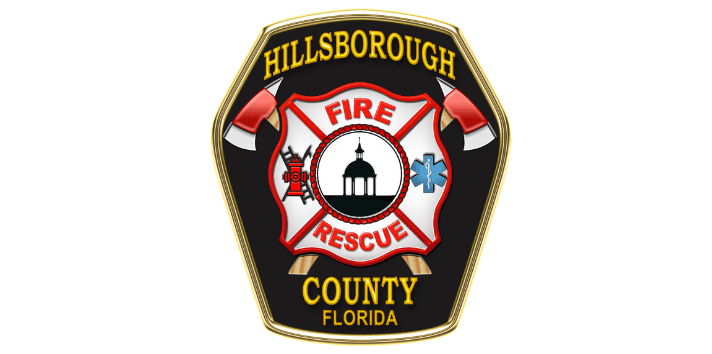
Michael Hudkins, CFPS
Fire Plans Examiner/Fire Inspector II
"I would recommend CO2Meter gas training to anyone, it inspired us to be keenly aware of what to inspect."

Keith Isoldi
Chief Operating Officer
"I have always worked with CO2Meter because they are the industry leader."

Kelly Kissock
Faculty Director
"Easy to install, Our CO2 tank gassed off and the meter near it worked perfectly!"
Stay Informed with Our Latest Updates
Subscribe to our newsletter for the latest news, product updates, and industry insights.
CO2Meter is working with our global supply chain to minimize disruptions
Due to imposed tariffs, Quotes will be honored for 24 hours and may require a revised PO
CO2Meter is working with our global supply chain to minimize disruptions
Due to imposed tariffs, Quotes will be honored for 24 hours and may require a revised PO
CO2Meter is working with our global supply chain to minimize disruptions
Due to imposed tariffs, Quotes will be honored for 24 hours and may require a revised PO
CO2Meter is working with our global supply chain to minimize disruptions
Due to imposed tariffs, Quotes will be honored for 24 hours and may require a revised PO
CO2Meter is working with our global supply chain to minimize disruptions
Due to imposed tariffs, Quotes will be honored for 24 hours and may require a revised PO
CO2Meter is working with our global supply chain to minimize disruptions
Due to imposed tariffs, Quotes will be honored for 24 hours and may require a revised PO
CO2Meter is working with our global supply chain to minimize disruptions
Due to imposed tariffs, Quotes will be honored for 24 hours and may require a revised PO
CO2Meter is working with our global supply chain to minimize disruptions
Due to imposed tariffs, Quotes will be honored for 24 hours and may require a revised PO
CO2Meter is working with our global supply chain to minimize disruptions
Due to imposed tariffs, Quotes will be honored for 24 hours and may require a revised PO
CO2Meter is working with our global supply chain to minimize disruptions
Due to imposed tariffs, Quotes will be honored for 24 hours and may require a revised PO
CO2Meter is working with our global supply chain to minimize disruptions
Due to imposed tariffs, Quotes will be honored for 24 hours and may require a revised PO
CO2Meter is working with our global supply chain to minimize disruptions
Due to imposed tariffs, Quotes will be honored for 24 hours and may require a revised PO
CO2Meter is working with our global supply chain to minimize disruptions
Due to imposed tariffs, Quotes will be honored for 24 hours and may require a revised PO
CO2Meter is working with our global supply chain to minimize disruptions
Due to imposed tariffs, Quotes will be honored for 24 hours and may require a revised PO
CO2Meter is working with our global supply chain to minimize disruptions
Due to imposed tariffs, Quotes will be honored for 24 hours and may require a revised PO
CO2Meter is working with our global supply chain to minimize disruptions
Due to imposed tariffs, Quotes will be honored for 24 hours and may require a revised PO
CO2Meter is working with our global supply chain to minimize disruptions
Due to imposed tariffs, Quotes will be honored for 24 hours and may require a revised PO
CO2Meter is working with our global supply chain to minimize disruptions
Due to imposed tariffs, Quotes will be honored for 24 hours and may require a revised PO
CO2Meter is working with our global supply chain to minimize disruptions
Due to imposed tariffs, Quotes will be honored for 24 hours and may require a revised PO
CO2Meter is working with our global supply chain to minimize disruptions
Due to imposed tariffs, Quotes will be honored for 24 hours and may require a revised PO
CO2Meter is working with our global supply chain to minimize disruptions
Due to imposed tariffs, Quotes will be honored for 24 hours and may require a revised PO
CO2Meter is working with our global supply chain to minimize disruptions
Due to imposed tariffs, Quotes will be honored for 24 hours and may require a revised PO
CO2Meter is working with our global supply chain to minimize disruptions
Due to imposed tariffs, Quotes will be honored for 24 hours and may require a revised PO
CO2Meter is working with our global supply chain to minimize disruptions
Due to imposed tariffs, Quotes will be honored for 24 hours and may require a revised PO
CO2Meter is working with our global supply chain to minimize disruptions
Due to imposed tariffs, Quotes will be honored for 24 hours and may require a revised PO


